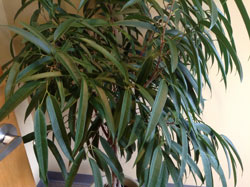
At long last, our wishes of a smaller and lighter iPad
have come to fruition. The iPad 3 and 4 are great products, but they’re
heavy and thick, and because of this, exhausting to use for a long
period of time. Apple
has done a lot right to be the leader in tablets. Whether you love or
hate iOS, you have to admit that the iPad brand represents some pretty
important things: great hardware, great battery life, and a great app
selection. For the first time ever, Apple is introducing a new form
factor for its iPad, one that is significantly smaller. And there isn’t
exactly fervent competition in this space, either. The closest
competitor to the iPad Mini is the Nexus 7, a $200 tablet from Google
and Asus that is positioned for a different kind of consumer.
Steve Jobs said that 7″ tablets were dead-on-arrival, and Apple is
here with their 7.9″ tablet, claiming an increase of 36% in screen space
over other 7″ tablets like the Nexus 7.
Is Apple again distorting reality, or is the iPad Mini really a
different kind of “smaller” tablet? What kind of consumer has Apple
targeted with the iPad Mini? Is it worth buying this first-generation
product, or should you wait for the next Mini? Read our full review to
find out!
Specs
The iPad Mini is really just a shrunken iPad 2.
It has a 7.9″ 1024×768 resolution display, resulting in a PPI of 161
(versus 131 on the iPad 2, 262 on the iPad 3 and 4, and 215 on the Nexus
7 and Kindle Fire HD). The CPU is the dual-core A5 chip which is
estimated to have a clock speed of 1GHz, coupled with 512MB of RAM. It
has dual-band WiFi (a/b/g/n) with LTE options on AT&T, Verizon, and
Sprint. The battery is 4400mAh. The iPad Mini runs on iOS 6.0.1.
Hardware

The iPad Mini is like a razor-thin slice of screen. It’s quite beautiful.
Like the iPhone 5, the iPad Mini has a beveled edge. It seems that Apple has improved its manufacturing process because we have yet to accidentally scratch the edge, nor did it come from the factory with any chips, as was the case with many iPhone 5s.

The gun-metal backing is all aluminum, and it’s cool to the touch when you pick it up. If you go with black, fingerprints will show up much more easily. Towards the top is the 5MP iSight camera, which takes impressively good shots. More on that later.
The iPad Mini has the Lightning charging connector. Flanking the port are stereo speakers which sound just a little bit louder than the mono speaker on the other iPads.

This thing is thin. Thinner than you think.
Apple claims that the Mini is as thin as a pencil, and here’s proof. It is.

Compared to other 7″-class tablets like the Nexus 7, the iPad Mini is
wider. If you have small or medium sized hands, you might find it
awkward to hold with one hand if you’re trying to hold it from
edge-to-edge. You’re more likely to hold it along the side bezel or from
the bottom. If you hold it from the edge, Apple has employed
finger-rejection software to ignore your thumb if it’s resting on the
edge of the screen. In fact, this finger-rejection now works in all iOS 6
devices, including the other iPads and iPhones.

If you’re trying to get a sense for the width of the screen, it just
so happens that a CD spans the exact width of the display. (Kids: a
compact disc is a digital storage device from the 1980s that can contain
music, movies, or software.)
Apple is making a Smart Cover to work with the iPad Mini. This blue looks especially nice with the black. The Smart Cover is still a pricey accessory at $40.

But it works quite well to prop up the Mini on a table, or on your lap for typing.
iOS 6

The iPad Mini runs iOS 6, which, like all iOS devices,
has fantastic ease-of-use, access to great cloud services that bridge
together all Apple products, and access to the most comprehensive app store in the world.
But alas, iOS, with each new product that runs the operating system,
seems increasingly stale and boring. Adding movie reviews to Siri or VIP
to email just isn’t enough to keep the platform interesting, not while
Android is innovating with Photo Sphere, multiple user support, gesture
typing, rich notifications, lock screen widgets, and Google Now (which
is infinitely more useful than Siri).
It’s not that iOS is bad, because it’s not, it’s just no longer
thrilling or interesting. When something is too familiar and it no
longer surprises you, it becomes boring.
The saving grace for the iPad Mini is the hardware: it’s remarkable.
It makes you forget, if only for a few moments, that iOS has stagnated.
And the truth is that you spend most of your time in apps, anyhow.
Camera


We don’t often talk about the camera on a tablet, because who uses a camera on a tablet? In the case of the iPad Mini, perhaps more people will be using this camera, because it’s darn good. We’d compare the photo quality of the Mini to the iPhone 4 or Galaxy S II.
The display of the iPad Mini is very high quality, just as we have come
to expect from Apple mobile device displays. The color saturation is
great, contrast is excellent, and viewing angles are wide. But then
there’s the resolution. As you can see from above, if you’re looking at
the Mini from less than 18″, you’re going to see pixels. And if you own a
higher resolution device (whether iOS, Android, or Windows Phone),
you’re going to notice. But if you’re conscious to hold the Mini at
least 18″ away from your eyes, the screen smooths out a lot. It’s a
frustrating compromise, but it’s one that’s not unique to the iPad Mini,
and also has to be made (to a lesser extent) on tablets like the Nexus
7.
Here’s the Mini next to the iPad 4. As you can see, the exact same
amount of content displays on both, despite the iPad 4 having four times
the pixels of the Mini. How could this be? The iPad 4 displays all
screen elements with quadruple the amount of pixels compared to the
Mini. It’s what Apple is doing with the Retina displays
on their Macbooks. Our reason for showing you this is to demonstrate
that while the Mini is indeed smaller, you get to see as much data on
the screen at once when compared to the bigger iPads.

Just for fun, here’s the Surface RT next to the iPad Mini. The Surface has a very tall screen because it’s a 16:9 device, while the iPad Mini, and all iPads, are in a 4:3 aspect ratio.

Again, here’s the Mini next to the Nexus 7, both on maximum screen brightness. Both are showing about the same amount of the webpage.

And here’s the Kindle Fire HD 7″, which starts out at a more zoomed-out view.

Stacked from bottom to top we have: Surface RT, iPad 3, iPad Mini, Kindle Fire HD 7″, Nexus 7.
Performance
We were a bit worried that the iPad Mini, with a last-generation A5
CPU, would be a bit of a slouch in terms of performance. We can report
that this is fortunately not the case: the Mini is exceptionally
responsive in day-to-day use. Moving between apps, browsing the web, and
playing games is a smooth and lag-free experience. The exception is
with some of the more demanding games, such as Modern Combat 3, which
take some extra time to load when compared to the iPad 3 and 4, and also
can be choppy at times. Overall, we were satisfied with the
performance.
Battery Life
The battery life of the iPad Mini is terrific. In our testing of
mixed usage, we were able to use the Mini for a full 10 hours before
needing to plug in for a recharge. And charging times are reasonably
quick, too, requiring 3.5 hours to go from 0-100%. If you want to charge
even faster, use a 10w charging adapter from the 9.7″ iPads (just don’t
make a habit out of it, as repeated use could damage your battery).
Pros
- + Incredible build quality
- + Remarkably thin and light
- + Access to a plethora of quality apps
- + Outstanding battery life
- + Great display, despite low-resolution
- + Snappy performance
- + Plenty of cellular data options
Cons
- - Low resolution screen can be bothersome from close viewing distances
- - Pricey
- - iOS is boring
Purchasing
You can buy an iPad Mini starting at $329 for the 16GB model in your
choice of black or white. If you want cellular data with LTE, you now
have three carrier options in the US instead of just two: AT&T,
Verizon, and Sprint. Choosing the cellular data option will add $130 to
the price of your unit, and remember: with cellular data on the iPad,
you turn it on and off when you need through the settings. You don’t
need a contract, nor are you signing yourself up for endless monthly
payments for data, even if you don’t use it.
Conclusion
The iPad Mini is a miniature iPad, and that’s a very powerful
prospect. It has just about everything we want in a small iPad, except
for, of course, a Retina display. As long as you’re holding the iPad
Mini 18″ or more away from your eyes, the lower screen resolution isn’t a
deal-breaker. And while we aren’t excited by the $130 price difference
between the Mini and the Nexus 7, what you’re paying for is access to a
vast selection of quality tablet apps, plus exceptional build quality.
A note: there’s another important consideration to be made here.
The iPad Mini is the first of its kind. Its biggest weakness, the
display resolution, very well might be addressed in the second
generation product. In fact, there are rumors to this effect already. If
you plan on living with your purchasing decision for a while, you might
want to wait 10 months or so to see whether the iPad Mini 2 has a
Retina display. Our best guess is that it will. We’d also put our money
on the iPad Mini 2, with a Retina display, getting a bit thicker and
heavier, which wouldn’t be so bad considering how strangely thin and
light the current-generation Mini is.








No comments:
Post a Comment